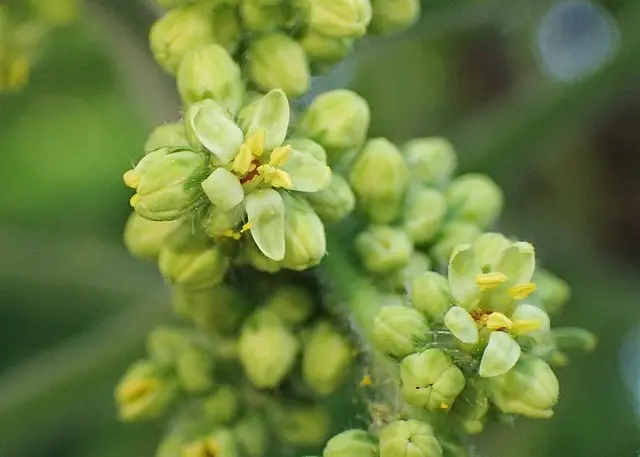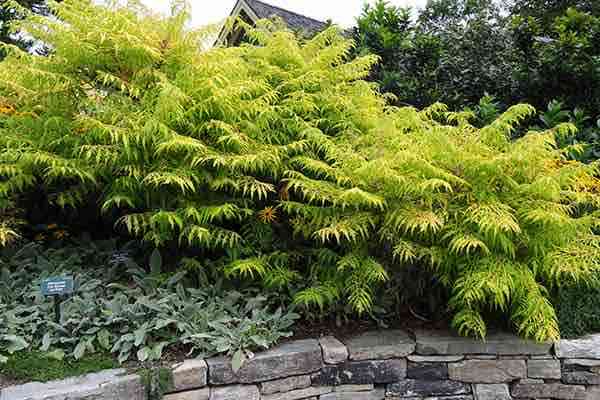Staghorn Sumac Is Dioecious
Photo:
Jean Carr
Staghorn Sumac puts on a startling display of color in the fall. It is a pleasing sight, especially in the fall, when the leaves turn extremely colourful. It is dioecious, with male and female flowers on separate plants.
Male and Female Flowers

Photo Credit: Krzysztof Ziarnek, Kenraiz, CC BY-SA 4.0 via Wikimedia Commons

Photo Credit Krzysztof Ziarnek, Kenraiz, CC BY-SA 4.0, via Wikimedia Commons
Female flowers produce showy pyramidal fruiting clusters (up to 8″ long), each containing numerous hairy, berry-like drupes that ripen bright red in autumn and gradually turn dark red as they persist through much of the winter.
Male flowers are small, greenish-white or yellow in colour, and form dense terminal panicles.
Male flowers bloom from May to June, while female flowers bloom from June to September.
Habitat
Staghorn Sumac natural habitats are sandy and rocky sites and abandoned fields. They are easily grown in full sun to part shade in average, dry to medium moisture, well-drained soils. Staghorn Sumac are adaptable to many soil types, but they must be well drained. They are generally adaptable to urban environments. In the wild, this suckering shrub will form thickets through self-seeding and root suckering; for this reason, it is not recommended in small gardens as it suckers and spreads quickly..
It is named after the horns of a male deer (stag) due to its soft, velvety, antler-like branches.
Does best on well-drained, sandy, poor-quality, dry, sterile soils but is adaptable.

Caring for Staghorn Sumac
They can be invasive for most shrub borders. Spreads by root suckers. Easily transplanted. Best on hard-to-cover areas with poorer soils or for naturalizing in wild areas. Adaptable to other soil types but does best on well-drained, sandy, poor-quality, dry, sterile soils. Tolerates city conditions.







Leave a Reply
You must be logged in to post a comment.